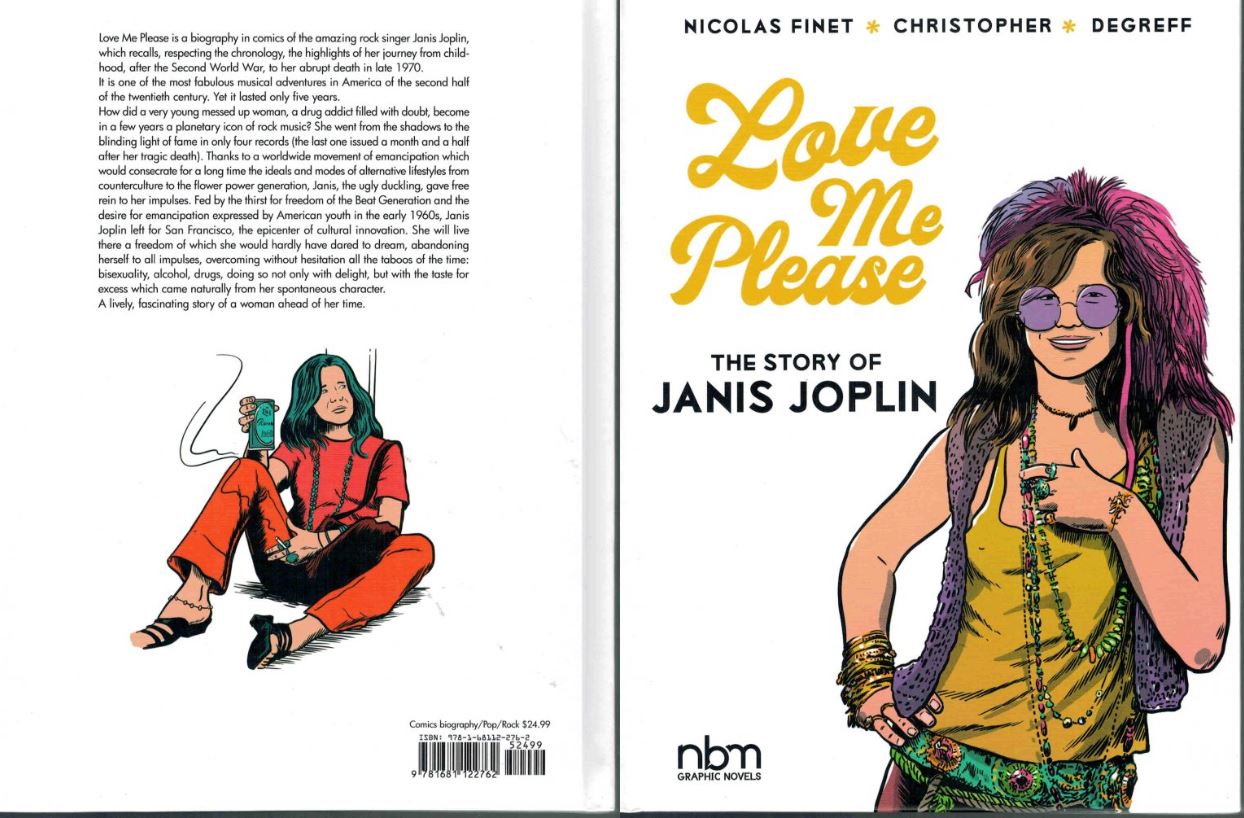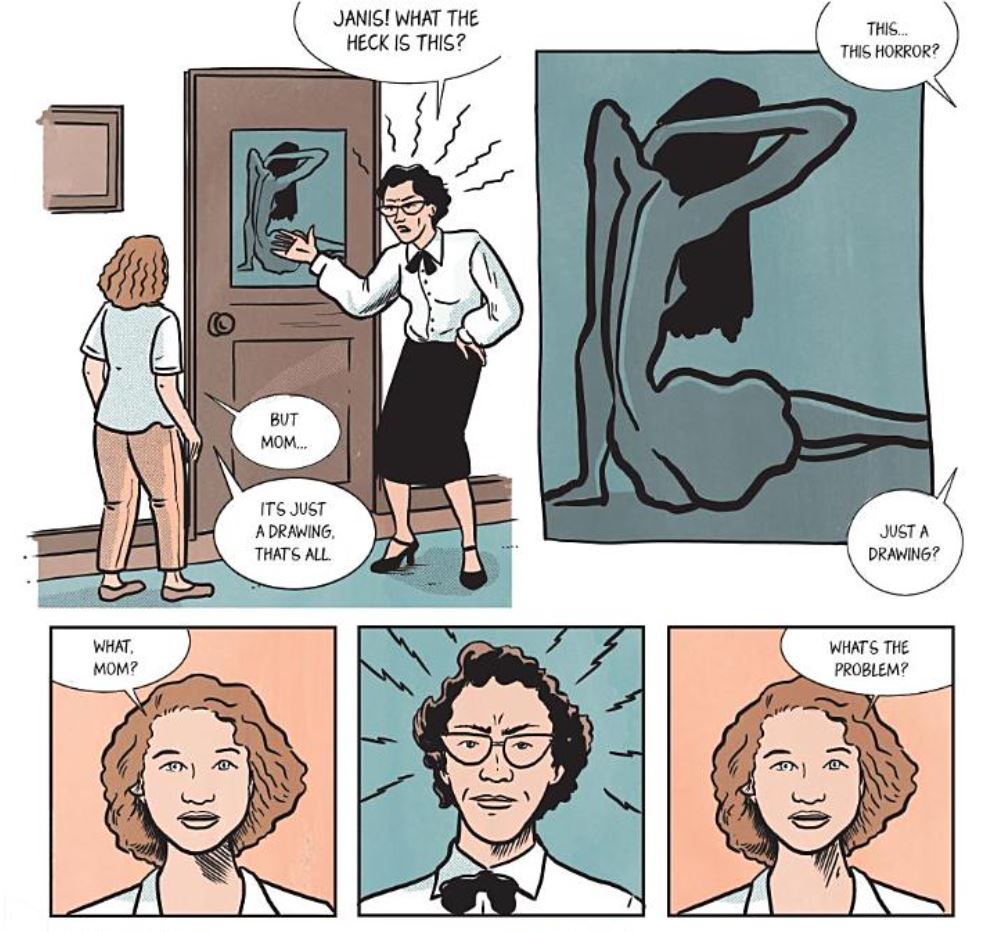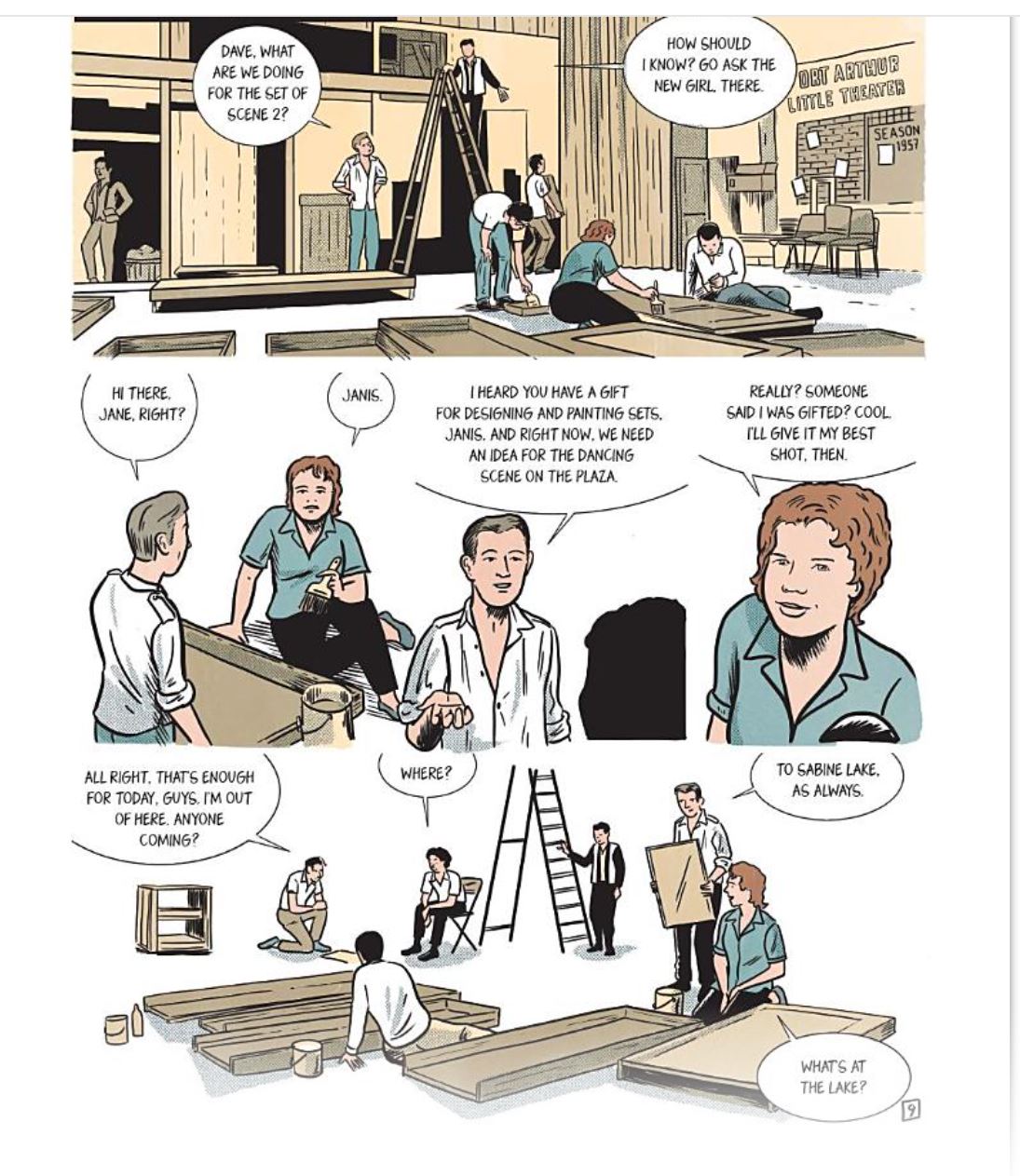
By Nicolas Finet & Thierry Lamy, illustrated by Joël Alessandra, Antoane, Will Argunas, Katya Bauman, Romain Brun, Céheu, Christopher, Janis Do, Benoît Frébourg, Thierry Gioux, Kongkee, Estelle Meyrand, Yvan Ojo, Gilles Pascal, Christelle Pécout, Lauriane Rérolle, Toru Terada, Martin Texier, Léah Touitou, Martin Trystram & various: translated by James Hogan (NBM)
ISBN: 978-1-68112-350-9 (HB) eISBN: 978-1-68112-351-6
This book includes Discriminatory Content included for dramatic effect and historical verity.
Having been (an extremely minor) part of the revolution and probably seen at most of the UK gigs and events cited here, I found it most difficult to remain dispassionate about the book under review today. It’s really very good, and I apologize if I seem less than my effusive self. Apparently, being fair and neutral is actually quite hard if one is involved. Moreover, it’s rather sad to realize that when all those disenfranchised kids warned of “no future”, right here, right now is what they were shouting about….
Graphic biographies are all the rage these days and this one is the most personally affecting yet. It’s strange to have lived long enough to find that the history people are writing and drawing is just “recently” and “remember when…” to some of us.
Part of NBM’s Music Stars in Comics series and guaranteed to appeal to a much larger audience than most comics usually reach, Punk Rock in Comics is a roundup of key bands and significant moments helpfully garnished with articles on the US and British antecedents and precursors, as well as a look at who joined late and what came next. It certainly deserves to reach as many as possible and will make a perfect gift if any of us make it to the next Great December fun-fest/Gig in the Sky…
… And just a note of clarification: between 1975 and 1981 us youth thought we were at the spear tip of a revolution, but it turns out it was a wave of similar-seeming local brush fires that were stamped out or died down of their own accord. Punk was music and fashion and guerilla graphics and SHEER ATTITUDE. All of it was primarily self-generated by triggered by example and a Do It Yourself philosophy sparked by the realization that no one in authority was ever going to help or rock a sitting status quo.
We concentrate on bands and music here but as a nod to the other great benefactor – self-publishing – this book is craftily delivered via distractingly faux-distressed pages meant to mimic the abundant and vibrant fanzine culture that came with us kids getting involved. Buying or trading a pamphlet did so much to popularise the movement in an era utterly devoid of social media and digital connection, but don’t whine you spend a few hours trying to flatten out wrinkle and glue stains that aren’t really there, okay?
Still with us? Okay then…
As if cannily re-presented popular culture factoids and snippets of urban history accompanied by a treasure trove of candid photographs, posters, badges fashions and other memorabilia aren’t enough to whet your appetite, this annal of arguably the closest we ever got to taking over the kingdom also offers vital and enticing extra enticements… but you’ll have to have your consciousness raised a bit before then.
Author, filmmaker, journalist, publisher, educator, translator/music documentarian Nicolas Finet has worked in comics over three decades: generating a bucketload of reference works – such as Mississippi Ramblin’ and Forever Woodstock. He adds to his graphic history tally (Prince in Comics, Love Me Please – The Story of Janis Joplin 1943-1970 and David Bowie in Comics) with this deep dive into the crazed career of the ultimate cosmic explorers and rebellious cultural pioneers. His scripts of the comics vignettes compiled in conjunction with frequent collaborator Thierry Lamy (Force Navale, David Bowie in Comics, Pink Floyd in Comics) are limned here by a spitting, pogo-ing posse of international strip artists, visually actualising vividly vocal and vociferous key moments in really recent history…
It begins with Céheu depicting ‘1969-1970 An American Prehistory’ as disillusionment in the1970s New World triggers reactions from young musicians like Jim “Iggy Pop” Osterberg and Richard Hell, and groups of iconic nearly-men such as MC5, Television and the New York Dolls set the scene and laid the groundwork for what came – quite unfairly – to be regarded as a British revolution…
Following a fact-packed essay, the state of our nation is assessed in ‘1971-1975 The United Kingdom of Pub Rock’, courtesy of Gilles Pascal. A growing hunger for cheap live music and short songs led to an extinction event for “Prog Rock” and the rise of bands and performers who would score no real chart success but reshape the industry for decades to come…
A text discussion of bands like (Ian Dury’s) Kilburn and the High Roads, Brinsley Schwartz, Nick Lowe, Eddie and the Hot Rods and more enjoying a growing London-centric live gig scene leads to Antoane’s proto-punk assessment ‘1974-1976 On the fringes of Punk Rock, a few Inspired Trailblazers’ (Dr. Feelgood, Graham Parker and the Rumour, Elvis Costello) before the cultural main event kicks off with Thierry Gioux’s coverage of ‘1975-1978 The Sex Pistols Endless Rebellion’ and a detailed biopsy of the Clash in ‘1976-1985 Combat Rock’ limned by Martin Trystram.

Further mini-bios follow in comics and essay combinations, exploring lesser gods of revolt such as ‘1976-1980 Buzzcocks Energy Made in Manchester’ by Katya Bauman, ‘1974-1996 We, The Ramones’ from Toru Terada, Benoît Frébourg’s ‘1976-2015 The Damned May the Farce be with You!’ and an assessment of lost wonders in Yvan Ojo’s ‘1975-1978 Johnny Thunders and the Heartbreakers’…
As I said, Britain got the lion’s share of global headlines (and reactionary authoritarian blamestorming) but the process and progress were international. Romain Brun illustrates ‘1974-1977 Meanwhile, in New York’ where the club CBGB was building a rep through outsider bands such Television, New York Dolls, Blondie, Talking Heads, the Dead Boys and poet Patti Smith, and by staging the first UK band to play America: The Damned…

A few more individualists are explored in ‘1976-1996 Siouxsie and the Banshees The Punk Sorceress’ by Léah Touitou, and Martin Texier reveals just how different The Vibrators were in ‘1976-2020 Never Stop Vibrating’ prior to Janis Do detailing the effect, influence and ultimate tragedy of Jimmy Pursey and Sham 69 in ‘1976-1980 Working Class Heroes’… It was a time of change, fervour and febrile opportunism and many acts were caught up in the money and mood, if not movement, usually against their will and at the behest of old-guard record companies. Christopher illuminates how The Jam rode the storm in ‘1974-1979 Not Quite Punks: a handful that can’t be put in a box’ and Lauriane Rérolle details ‘1975-1983 The Irish Wave’ that picked up and spat out The Undertones and Stiff Little Fingers but lost so many others.
‘1975-1982 Girls to the Front!’ by Christelle Pécout focusses on how “the kids” demand to be heard somehow didn’t apply to The Slits – until they put their big booted feet down – whilst Estelle Meyrand explores international wonders most of us missed at the time – no, not Belgium’s Plastic Bertrand but Australia’s The Saints and US phenomenon and political activist Jello Biafra and The Dead Kennedys in ‘1976-1980 Punks from Elsewhere’…

Despite constant accusations of nihilism Punk was always an inviting and inclusive arena and ‘1975-1981 Punks and Rastas’ from Joël Alessandra details cultural cross pollination and active inclusivity – leading to the Two Tone era – and Will Argunas recalls ‘1975-1983 Punks and Hard Rock: Loud, Fast, and in Your Face!’ via the life and achievements of Lemmy Kilmister and Motörhead, before Kongkee draws this tome to a close with a trip through ‘1981 and Beyond: The Post-Punk Legacy’ encompassing Electropop, New Wave/Romanticism, Grunge and more, citing bands such as Pere Ubu, Devo, et al…
This compelling and remarkable catalogue of cultural change and artistic hostage-taking includes a Selective Discography of the bands most crucial cuts, Further Reading, listings of Films and Videos, Photo Credits and a copious Acknowledgements section.
Punk Rock in Comics is a comprehensive and intriguing skilfully realised appreciation of a unique moment in time and society, boldly attempting to capture a too-big rocket in a very small bottle but still doing a pretty good of recalling the when, how and who, if not quite the why of the era. It’s also a true treasure for comics and music fans if they weren’t actually there: one to resonate with all those probably still quite angry and disaffected veteran kids who love to listen, look and wonder what if..?
© 2024 Editions Petit as Petit. © 2025 NBM for the English translation.
Punk Rock in Comics will be published on 18th March. 2025 and is available for pre-order now. NBM books are also available in digital editions. For more information and other great reads see http://www.nbmpub.com/



































